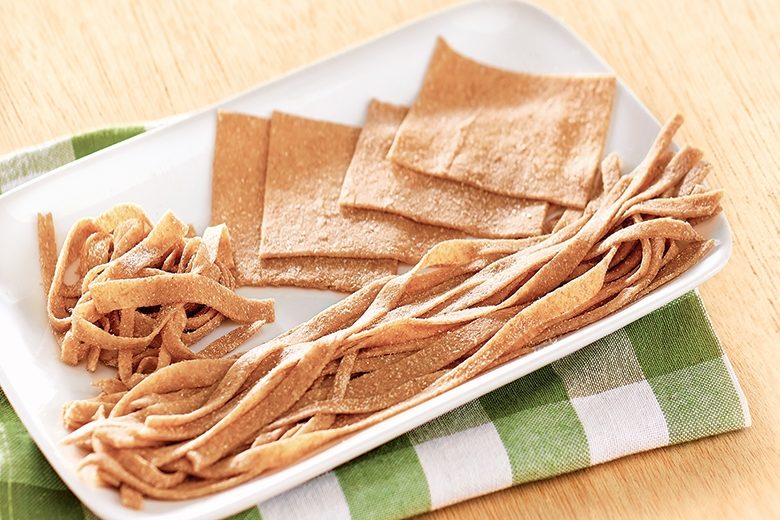
It may seem like a daunting task to make fresh pasta, but the only tools you really need are your hands, a rolling pin and a knife. With dried pasta so readily available, some may wonder why they should learn this skill. The simple reason is that fresh pasta tastes better and can be modified to make it uniquely flavorful and nutritious.
The key to good, fresh pasta is the ingredients. Quality eggs and flour help produce a delicious product. It’s the amount, kind and ratio of those ingredients that differ among recipes and chefs. Some cooks prefer more eggs in their dough, while others swear by using only certain types of flour and some find the addition of water or oil key to making the perfect pasta dough. In other words, pasta is a reflection of personal preferences and is a process in which experimentation is encouraged.
Pasta recipes call for various types of flours; all-purpose, semolina, durum wheat and Italian “00” flours are commonly used based on preference. Most pasta is made from wheat flours, which contain differing amounts of protein. Gluten, the protein in flour, gives dough its stretch and strength. Too much gluten can make dough tough and unyielding, but too little can lead to delicate dough that breaks easily. The key is balance. Typically high- to moderate-protein flours are best-suited for breads and pastas. Other flours, such as pastry and cake varieties, have low protein content, making them unable to provide structure needed for bread or pasta. A blend of medium- to high-protein flours works well for pasta-making.
Try combinations of all-purpose, semolina, whole-wheat and “00” flours to create different textures. To increase the nutritional value of homemade pasta, try adding flavorful herbs, spices and vegetables.
Defining Pasta Flours
- All-purpose flour: A type of wheat flour with a moderate protein content, it is ideal for many cooking applications including breads, cakes, cookies and other baked goods.
- Whole-wheat flour: Ground whole-wheat berries, including all parts of the kernel, makes it a nutritious choice. Whole-wheat flour has a high protein content and is ideal in breads, pastas and baked goods that don’t require a light texture.
- Semolina flour: A type of flour produced from the endosperm of a high-protein variety of wheat known as durum wheat, it is coarsely ground flour that is commonly used in breads and pastas and is ideal for blending with other high-protein flours.
- “00” flour: The double zero is an Italian reference for the level of grind, with 00 being the finest. This wheat flour has a lower protein content than whole-wheat flour and a much finer grind, making dough more pliable and easier to handle. It is ideal for pasta and pizza doughs.





